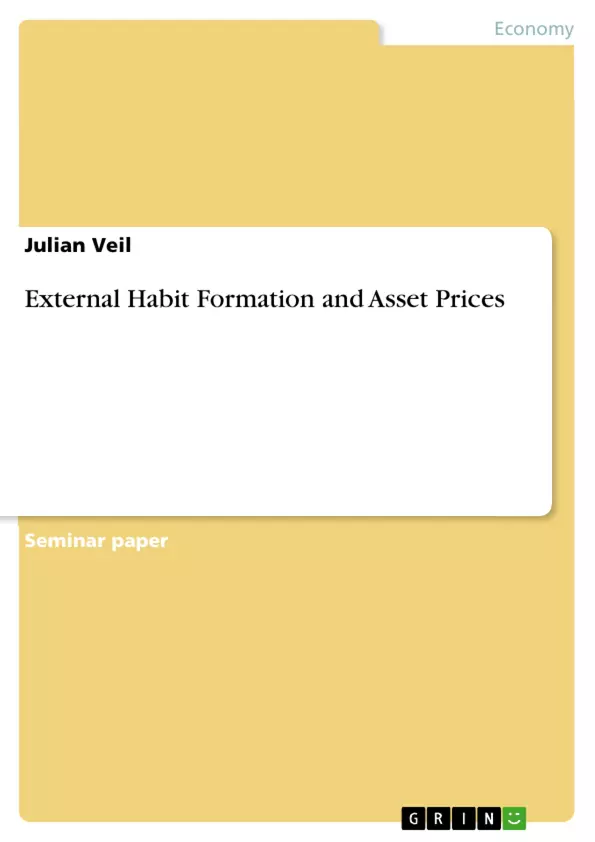This paper aims to explain the countercyclical behavior of the equity risk premium and the stock return volatility by introducing an external habit formation feature in the standard representative-agent consumption-based asset pricing model, in form of the so called “catching up with the Joneses” preferences. These preferences imply that the relative risk aversion of the agents in the economy is constant over time and varies across the agents, which generates an endogenous wealth process, that in turn creates a countercyclical behavior in the risk premium and the conditional stock return volatility. As the agents with lower risk aversion distribute a greater fraction of their wealth to risky assets, their wealth decreases relatively more in reaction to cyclical downturns, shifting the aggregate wealth towards more risk averse individuals. These more risk averse agents, however, demand a higher compensation for risk, leading to an increase of the aggregate equity risk premium in response to a fall in stock prices.
One of the most studied topics in modern economics are the market mechanisms that lead to the determination of asset prices in an economy. The empirical research indicates that there is a link between the historically observed asset prices and macroeconomic developments. One of the most important observations are the countercyclical behavior of the equity risk premium and the stock return volatility, implying that the excess return of common stocks over the risk-free rate during business cycle troughs is significantly higher than during expansions.
Inhaltsverzeichnis (Table of Contents)
- Introduction
- “Catching up with the Joneses” Preferences
- Conceptual Framework
- The Model
- The Competitive Equilibrium
- The Results
- Theoretical Implications
- Simulated Outcome
- Discussion
Zielsetzung und Themenschwerpunkte (Objectives and Key Themes)
This paper aims to explain the countercyclical behavior of the equity risk premium and stock return volatility by introducing "catching up with the Joneses" preferences into a standard representative-agent consumption-based asset pricing model.
- External habit formation and its impact on asset prices
- The role of "catching up with the Joneses" preferences in explaining asset price dynamics
- The countercyclical behavior of the equity risk premium and stock return volatility
- The influence of preference heterogeneity on asset pricing
- The "equity premium puzzle" and the "risk-free rate puzzle"
Zusammenfassung der Kapitel (Chapter Summaries)
The paper begins by explaining the "catching up with the Joneses" preferences and their impact on portfolio decisions and asset pricing models. The model is then developed with a focus on the utility function, the aggregate endowment process, and the competitive equilibrium. The theoretical implications of the model are then discussed, followed by an analysis of the simulated outcomes. The paper concludes with a discussion of the findings and their implications for understanding asset price determination in financial markets.
Schlüsselwörter (Keywords)
Key terms and concepts in this paper include: external habit formation, "catching up with the Joneses" preferences, countercyclical equity risk premium, stock return volatility, preference heterogeneity, equity premium puzzle, risk-free rate puzzle, asset pricing, consumption-based models, and representative agent models.
- Quote paper
- Julian Veil (Author), 2021, External Habit Formation and Asset Prices, Munich, GRIN Verlag, https://www.grin.com/document/1005687



